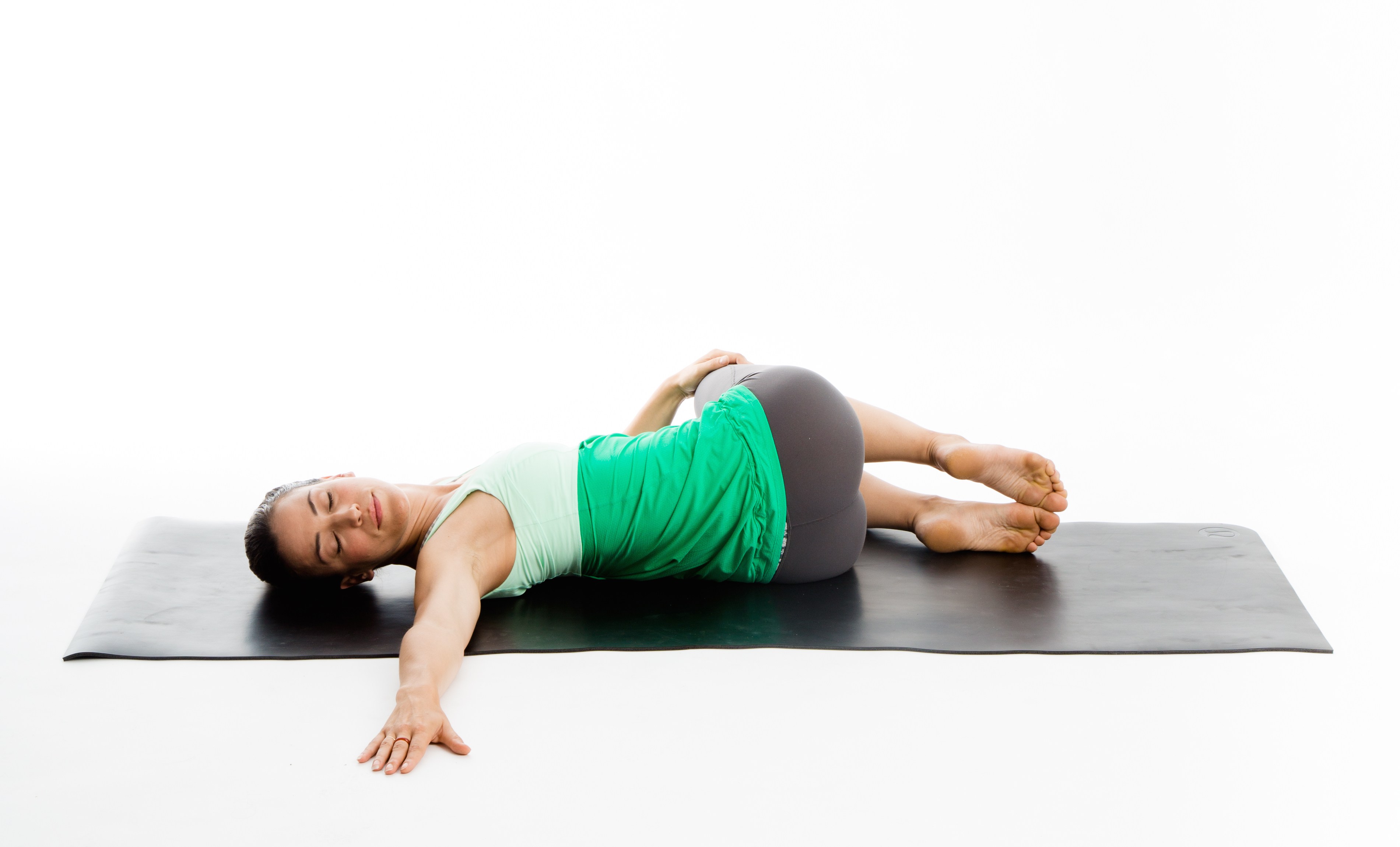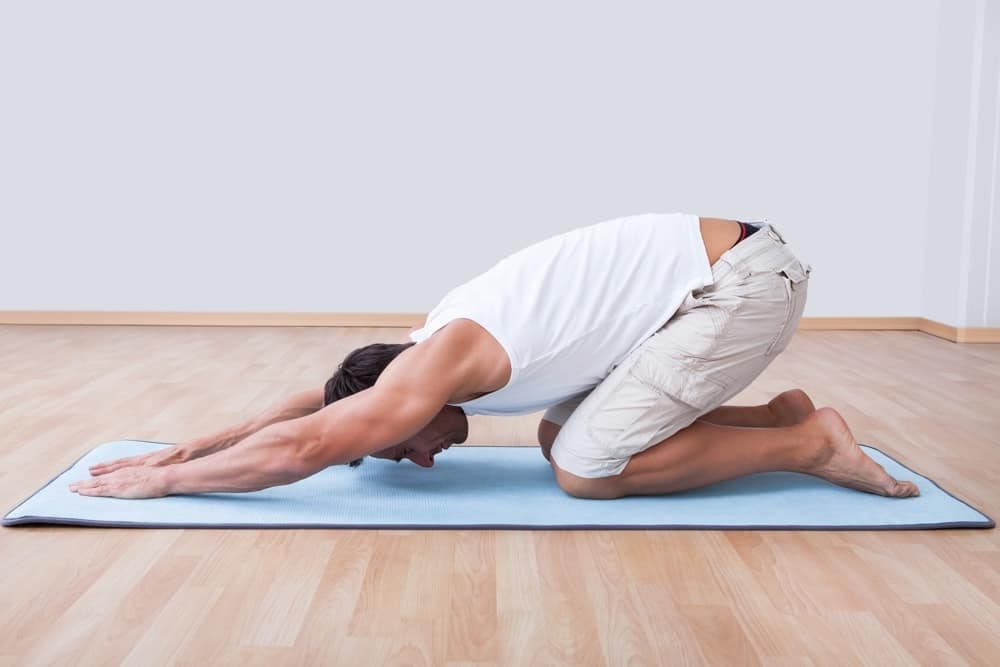Sciatica pain relief yoga
For people prone to sciatica, there is no need to specify how acute the pain can be in the event of an attack... To the point of making movement impossible.
Sciatic pain is not always as severe, but some people suffer from chronic sciatica.
This is not about complicated yoga postures, dynamic yoga, kripalu yoga, hatha yoga, vinyasa yoga... but rather about practicing yoga in a gentle way to better manage your body!
What is sciatica?
Before we talk about yoga, let's take a look at sciatic nerve problems.
The sciatic nerve (or rather sciatic nerves, since there are two of them) is the longest and largest nerve in the human body. It runs from the lumbar vertebrae to the feet. It is a mixed nerve: it carries sensory and motor information.
When one suffers from sciatica, or sciatica, the pain felt is intense. It can be felt from the buttocks to the feet (lower back, buttocks, thigh, external surface of the knee, calf and up to the malleolus), following the path of the nerve. Symptoms can also include back pain and stiffness of the spine.
This pain is caused by the compression of one of the nerve roots. It can be due to a herniated disc, osteoarthritis, lack of flexibility of the hips, but not only. False movement can also cause severe pain that radiates to the entire leg. The pain appears abruptly, like a real electric shock.
It is best to be careful when lifting large boxes when moving, for example.
Medication treatment calms the pain, promotes muscle relaxation and reduces inflammation. An osteopathic session also helps to release tension and the place where the nerve is pinched to relieve you. You can also follow about ten sessions of physiotherapy to accelerate your recovery. However, once the nerve has been pinched, the pain or discomfort usually persists for a few weeks.
In 80-90% of patients, the pain subsides within 6 weeks, but this is not always the case. 25% of patients have pain beyond 6 weeks and often the problem recurs and recurs again after a few months.
If the pain persists for several months and is related to a herniated disc (verifiable by MRI), surgery may be considered.

Yoga to relieve the pain of sciatica
Is yoga beneficial? First of all, in case of sciatica, it is not recommended to stop all physical activity for too long, at the risk of losing muscle mass. In addition, total immobilization does not promote healing. Without running 10 kilometers every day, it is advisable to continue walking for at least 30 minutes a day to use your muscles and get your body moving.
The sitting position should be limited, as you will see for yourself, the pain is more acute when sitting for several hours.
By staying active, you can more easily help the muscle to release tension. It has been shown that people who remain active recover faster.
Of course, speaking of activity, we are not talking about going for a marathon!
The idea is to let your body rest for 24 to 48 hours before gently resuming your usual daily activities, such as walking. Afterwards, you can gradually increase the intensity of your activities. Sports such as swimming can be beneficial. Even moderate physical activity boosts endorphin production and reduces pain.
This is also the case for yoga sessions. This discipline will help you regain flexibility and become aware of your body in a different way. The mind, worked on in yoga classes through concentration, relaxation and meditation, is also important in pain management.
Some yoga exercises will help reduce pressure on the sciatic nerve and relieve pain. Of course, it is important to seek the advice of your doctor before (re)starting yoga. It is also important to be well supervised to avoid any risk of injury. Your yoga teacher will be able to guide you through the basics of yoga.
Breathing exercises will help you to relax and regain a certain serenity. Yoga will strengthen your lower back and stretch your leg muscles to soothe pain, while teaching you how to breathe properly.

Here the emphasis is on gentle movements, especially passive twisting.
Depending on the possibilities and needs, one can do sitting or standing twists. Some exercises can even be done lying down. Here are a few examples:
• Twisting sitting, standing or lying down: these postures stretch the piriformis muscle, which when it is too contracted on the sciatic nerve causes pain,
• Hamstring stretching: when these muscles are overly contracted, they also promote sciatic pain. Place the stretched leg on a support. The foot should be at or below the hips. Simply holding the position or bending gently towards the leg if you are already supple stretches the muscles, which calms the pain,
• Stretching of the flexor muscles: when lying down, with a straight leg, simply bend one leg over your chest. Then place your hand behind your right knee and gently bring it to your left shoulder and hold the position. By lengthening the muscles of the lower back and working the muscles of the hips, you will relieve sciatic pain.
Before getting started, you need to have identified exactly what is causing it in order to adopt the right postures. Wait until the seizure has passed before making these movements and consulting a doctor to make sure it is not a serious form of sciatica (paralyzing and requiring surgery). Once the seizures are over, practicing yoga at home on a daily basis becomes a good way to prevent future seizures and to restore balance and harmony to the body.
What yoga positions for sciatic pain?
Stretching is beneficial for sciatic nerve pain. It goes without saying that a consultation with your doctor or the advice of your physiotherapist is essential before performing any movement. If you are in pain while doing one of the stretches, do not force it, as this may make the situation worse. Finally, wait until you are no longer irritated before doing the asanas and use them as a preventive measure.
We advise you to perform these postures on a mat to isolate yourself from the floor.
Pyramidal or piriform stretching
The piriform or pyramidal muscle starts at the sacrum, crosses the buttock and ends at the femur. When contracted, it can trap the sciatic nerve and cause numbness, a feeling of electricity or pain.
Lie on your back and try to get your whole back on the floor. Cross your right leg over your left leg with your right ankle at the level of your left knee. Put your right hand in the middle of your right leg to grab your left thigh below the knee with both hands.
Pull gently towards you and hold the position for 30 seconds while breathing deeply. Do the same with the other leg.

Mobilization of the spine
Always on your back, extend your arms in a cross, palms facing the ground for more stability. Make sure to keep your back on the ground, especially at shoulder level. Bend both legs, tilt them to one side and turn your head to the opposite side. It is normal for your buttocks and lower back to come unstuck as you tilt.
Hold the position for 30 seconds while breathing deeply. Repeat on the other side.
A variation exists to go further: you can keep one leg lying on the ground, bend the other and tilt the bent leg to the side over your extended leg (it makes my lower back crack every time!).
The posture of the cat-cow
On all fours, on one breath, unroll your back by digging the lower back and looking up in the "cow" position. On an exhalation, unroll the vertebrae in the opposite direction from the lower back to the top of the spine to round your back as much as possible.
Repeat the exercise over about 15 breaths.
The pigeon's posture
Sit on your knees and then stretch your right leg back and bring your left leg forward, still bent. Your left knee should not be facing you, but should be turned to the left side.
Hold the posture for 30 seconds before changing sides. Remember not to block your breathing!

The posture of the lotus bust forward
Sit down in a suit. If your flexibility allows, place the left leg on the right leg. Plunge your bust forward to put your head on the ground or at least get closer to it. Extend your arms forward to help you hold the position.
Hold the position 30 seconds before changing legs. Breathe deeply.
Stretching the psoas
The psoas is a muscle that we don't often think about stretching. However, in back and sciatic pain, it plays an important role. It starts in the lower back and extends to the front of the thigh.
Place yourself in the position of a serving knight: one knee on the ground, the other leg resting on the foot in front of you. Straighten your torso and move the knee of your leg forward, resting on your foot to stretch the muscle of your leg on the ground.
Hold for 30 seconds before changing legs. Don't forget to breathe slowly.
A variation exists by lying down on a table with your buttocks at the edge and your legs in the air. You bend one leg and bring it back to your chest gently for 30 seconds before changing sides.

Stretching the nerve of life
Sit on your buttocks, legs stretched out in front of you. Your feet may be joined or slightly apart. Lean gently toward your legs, keeping your back straight.
The more flexible among you will grab your feet and put your stomach on your thighs and your head on your knees.
Breathe deeply and hold for 30 seconds before releasing.
Abdominal breathing shoulders relaxed
Lie on your stomach and raise your upper body. Use your arms to support yourself with your elbows on the ground. Relax your back and shoulders, there should be no tension. We're just trying to release tension!
Breathe in through your nose while inflating your belly and breathe out through your mouth while digging your belly. Hold the posture for about fifteen breaths before gently releasing.
What position should I adopt to sleep when I have sciatic pain?
You may also be wondering how to sleep without pain when you have sciatic pain.
Having had sciatic pain for a few weeks because of a false movement, I know that sleeping can be complicated. Numbness, sensations of electricity in the leg, often the fetal position is impossible to hold. And I'm not even talking about those who like to sleep on their stomachs...
Already, it is not necessarily logical, but according to neurodynamics, if you have sciatica on the right, it is in your best interest to stretch the left sciatic nerve so that your sciatic nerve relaxes on the right.
Then, to relieve the nerve on the right, you will have to bend the right leg, move it away from its main axis and rotate it.
So how do you sleep? To sleep lying on your back, all you have to do is bend your leg and rotate it outwards. The ideal is to have cushions to slide under the knee to elevate the leg and make the position easier to hold all night long. The best way to relieve the sciatic nerve even more is to tilt your bust towards the leg which is bent to the side.
If you prefer to sleep on your side, you will need a few more cushions to rest your leg bent and turned and thus release the sciatic nerve. For more efficiency, you can also bring your neck in extension or, easier, in flexion (towards the inside).


